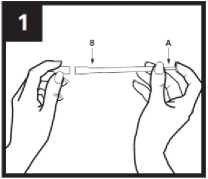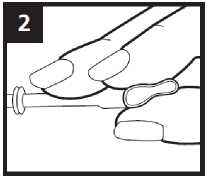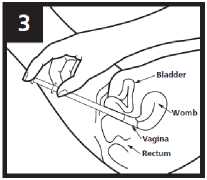Canesten Vaginal Tablets 100Mg
Patient Information Leaflet
CANESTEN® VAGINALTABLETS 100mg
(clotrimazole)
Read all of this leaflet carefully because it contains important information for you.
This medicine is available without prescription. However, you still need to use Canesten carefully to get the best results from it.
• Keep this leaflet. You may need to read it again.
• Ask your pharmacist if you need more information or advice.
• You must contact a doctor if your symptoms worsen or do not improve in 7 days.
• If you have any unusual effects after using this product, tell your doctor or pharmacist.
The name of your medicine is CANESTEN® VAGINALTABLETS 100mg but will be referred to as Canesten or Pessary throughout this leaflet.
IN THIS LEAFLET
1. What is Canestenand what is it used for?
2. Before you use Canesten
3. How to use Canesten
4. Possible side effects
5. How to store Canesten
6. Further information
1. WHAT IS CANESTEN AND WHAT IS IT USED FOR?
Canesten is indicated for the treatment of vaginal thrush. It is inserted into the vagina for treatment at the site of infection.
Only use this product if you have been previously diagnosed by your doctor as having vaginal thrush.
The active substance in Canesten is clotrimazole. Clotrimazole belongs to a group of medicines called azoles and is an antifungal agent which fights the cause of infections such as vaginal thrush.
2. BEFORE YOU USE CANESTEN Do not use Canesten:
• You are allergic (hypersensitive) to clotrimazole or any of the other ingredients of Canesten (see Section 6. Further Information).
• During your period as it may be less effective.
Before using Canesten, you should see your doctor if:
• You are unsure whether you have thrush or this is the first time you have had these symptoms.
• You have had more than two infections of thrush in the last six months.
• You or your partner have ever had a sexually transmitted disease.
• You are aged under 16 or over 60.
• You have ever had an allergic reaction to Canesten or any other vaginal antifungal products.
• You have any of the following symptoms:
• Irregular vaginal bleeding.
• Abnormal vaginal bleeding or a blood-stained discharge.
• Ulcers, blisters or sores of the vagina or vulva.
• Lower abdominal pain.
• Pain or difficulty in passing urine.
• Fever or chills.
• Feeling sick or vomiting.
• Diarrhoea.
• A foul smelling discharge from the vagina.
This is because Canesten may not be the right treatment for you.
Special precautions:
As with other pessaries, this product may reduce the effectiveness of rubber contraceptives, such as condoms or diaphragms. Consequently, you should use alternative precautions for at least five days after using this product.
Do not use tampons, intravaginal douches, spermicides or other vaginal products while using this product.
Avoid vaginal intercourse while you have thrush and during use of this product because your partner could become infected.
Using other medicines:
Please tell your doctor or pharmacist if you are taking or have recently taken any other medicines, including medicines obtained without a prescription.
Inform your doctor if you are taking tacrolimus or sirolimus (used to reduce the immune response to prevent rejection after an organ transplant).
Pregnancy and breast-feeding:
If you are pregnant, breast-feeding or trying for a baby, tell your doctor or midwife before using Canesten. If you have informed your doctor or midwife already, follow his/her instructions carefully. To treat internal thrush, your doctor may recommend that you use the pessary without the help of an applicator.
3. HOW TO USE CANESTEN
If Canesten has been prescribed for you by your doctor, follow any instructions he/she may have given you. If you purchased this product without a prescription, follow these directions closely:
The applicator should be used to insert the pessary as high as possible into the vagina, preferably before going to sleep on six consecutive nights for convenient and comfortable treatment. Alternatively, two pessaries may be inserted into the vagina before going to sleep on three consecutive nights. Wash your hands before removing the foil from the blister pack and again afterwards when you have used the applicator.
1. Remove the applicator from the packaging. Pull out the plunger A until it stops. Remove the pessary from the foil blister pack and place firmly into the applicator B.

2. To fit the pessary into the applicator, the holder of the applicator needs to be squeezed lightly at both sides. The pessary fits tightly into the applicator and needs to be squeezed into the holder to about 1cm.

3. Carefully put the applicator as deep as is comfortable into the vagina (this is easiest when lying on your back with your knees bent up). Holding the applicator in place, slowly press the plunger until it stops so that the pessary is deposited into the vagina.

4. Remove the applicator. After use, remove plunger A completely by pulling it out of the applicator B. Then wash it in warm (not boiling) soapy water, rinse and dry carefully.
5. After completing the treatment, dispose of the applicator in a safe place, out of the reach of children. The applicator cannot be flushed down the toilet.
Since the pessary dissolves in the vagina, it may be helpful to wear a panty liner because it is quite common to notice a white chalky residue after using the pessary. This does not mean that the treatment has not worked. However, if you notice pieces of undissolved pessary, speak to your doctor or a pharmacist, as the treatment may not have worked properly.
The symptoms of thrush should disappear within three days of treatment. If no improvement is seen after seven days you must tell your doctor. If the infection returns after seven days you may use one further treatment, but if you have more than two infections within six months you should see your doctor.
Canestenis for use in the vagina only:
Do not put the tablet in your mouth or swallow it.
If the pessary is swallowed accidentally, tell your doctor straight away or contact the Accident and Emergency Department of your nearest hospital.
If you forget to use Canesten:
Canesten should be used for six consecutive nights if one pessary is used, or three consecutive nights if two pessaries are used. However, if you forget to insert a pessary, follow the advice given below:
When you remember, continue with your course of treatment. If you have forgotten for more than one day, your infection may not be fully treated, so if symptoms persist upon completion of this course, see your doctor.
4. POSSIBLE SIDE EFFECTS
Like all medicines, Canesten can cause side effects, although not everybody gets them.
As with all medicines, some people may be allergic to the Canesten. If you are allergic, a reaction will occur soon after you have used the medicine. If you experience an allergic reaction or the redness, burning, pain, itching or swelling get worse, stop using this product and tell your doctor straight away or contact the Accident and Emergency Department of your nearest hospital. Signs of an allergic reaction may include:
• Rash.
• Swallowing or breathing problems.
• Swelling of your lips, face, throat or tongue.
• Weakness, feeling dizzy or faint.
• Nausea.
After you use the pessary you might experience:
• Itching, rash, swelling, redness, discomfort, burning, irritation, vaginal peeling or bleeding.
• Pain in the abdomen or pelvic area.
If you experience any of the above effects, tell your doctor or pharmacist immediately.
Reporting of side effects
If you get any side effects, talk to your doctor, pharmacist or nurse. This includes any possible side effects not listed in this leaflet. You can also report side effects directly via the Yellow Card Scheme at:www.mhra.gov.uk/yellowcard
By reporting side effects, you can help provide more information on the safety of this medicine.
5. HOW TO STORE CANESTEN
Keep all medicines out of the sight and reach of children.
• Canesten should not be stored above 25°C.
• Do not use after the expiry date printed on the carton or blister strip. The expiry date refers to the last day of that month.
• If the vaginal tablets become discoloured or show any other signs of deterioration, you should consult your pharmacist who will advise you what to do.
• Medicines should not be disposed of via wastewater or household waste. Ask your pharmacist how to dispose of medicines no longer required. These measures will help to protect the environment.
6. FURTHER INFORMATION What Canesten contains:
• The active substance is clotrimazole at a strength of 100mg.
• The other ingredients are lactose monohydrate, maize starch, lactic acid, microcrystalline cellulose, magnesium stearate, hypromellose, anhydrous colloidal silica, crospovidone and calcium lactate pentahydrate.
What Canesten looks like and contents of the pack:
• Canesten is a large white, rectangular tablet with a rounded end and marked ‘P3’ on one side and ‘Bayer’ on the reverse.
• Canesten is available as a pack of 6 tablets and one applicator.
Manufactured by: Bayer Pharma AG, Leverkusen, Germany.
Procured from within the EU and repackaged by the Product Licence holder: B&S Healthcare, Unit 4, Bradfield Road, Ruislip, Middlesex, HA4 0NU, UK.
CANESTEN® VAGINALTABLETS 100mg PL : 18799/2737
Remember: If you have any doubts about using Canesten correctly, seek the advice of your doctor or pharmacist.
Further information about vaginal thrush:
Vaginal thrush (candidiasis) is a common infection that most women suffer from at some time in their lives and is not caused by lack of personal hygiene.
Thrush is caused by a yeast (fungus) called Candida which lives harmlessly in the vagina and other parts of the body, without you even noticing it. However, the natural balance that keeps Candida under control can be upset by many factors such as hormonal changes (menstruation, contraceptive pill, pregnancy, menopause), poor health, antibiotics, perfumed soaps, bath additives and tight clothing.
If the natural pH balance is altered, the level of yeast increases and can develop into a thrush infection causing any of the following symptoms: persistent burning and/or itching around the vagina and vulva, redness, swelling and soreness of the tissues of the vagina and vulva and a whitish, odourless discharge from the vagina. Not everybody who has thrush has all these symptoms; you may have only one of them.
How to avoid future recurrences:
S Wear cotton knickers and loose clothing.
S Wash daily.
S After going to the toilet, wipe yourself from the front to back as a thrush infection may be transferred from the bowel.
S Change your sanitary protection regularly.
x Try to avoid wearing tights, nylon knickers and close fitting jeans. x Try to avoid washing with perfumed soaps or using vaginal deodorants.
x Do not wash or rub yourself hard with sponges or flannels and avoid hot baths with strong perfumed oils.
If you are still worried or have any questions about the symptoms or the treatment of thrush, do not hesitate to ask your doctor or pharmacist for advice.
For UK residents only: if you have any questions or would like more information, call the Canesten Advice Line on 0845 758 5030. Calls charged at local rate.
This is a service provided by Bayer plc and is not associated with B & S Healthcare
Leaflet Date: 23.10.2015